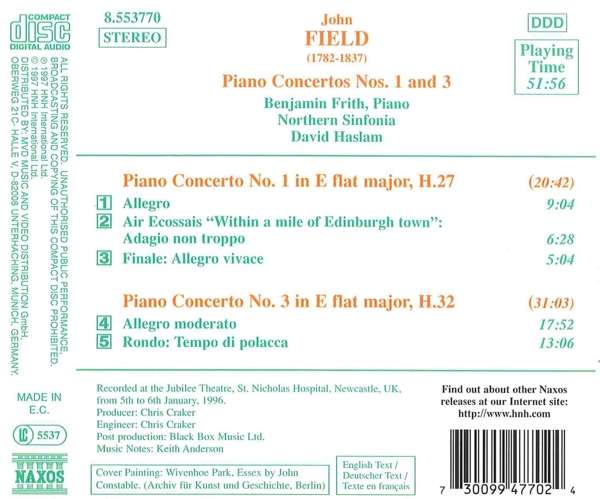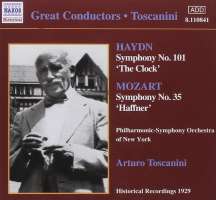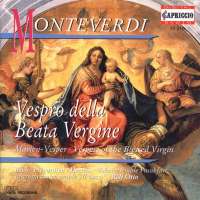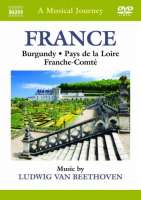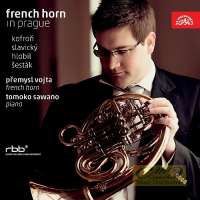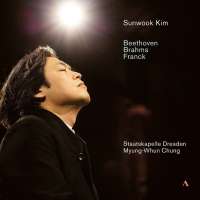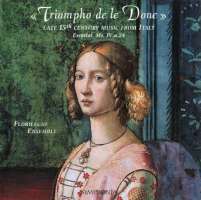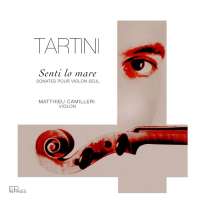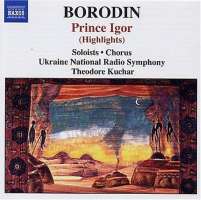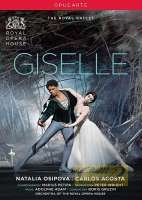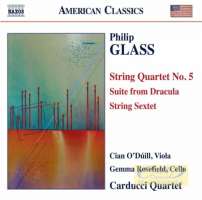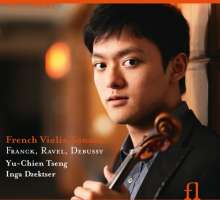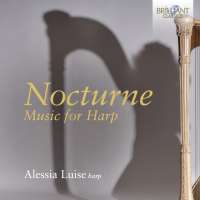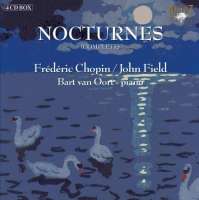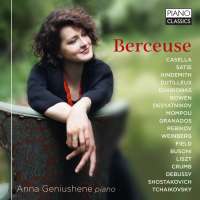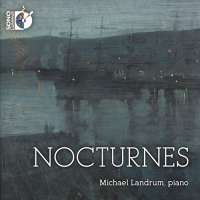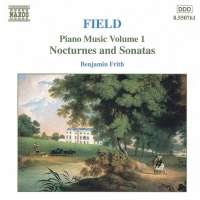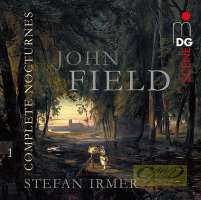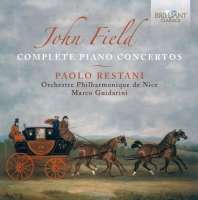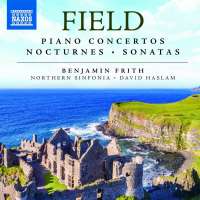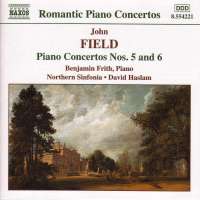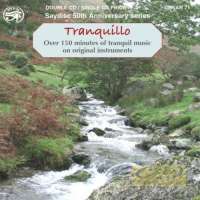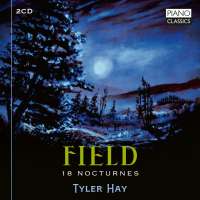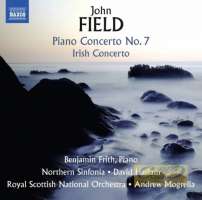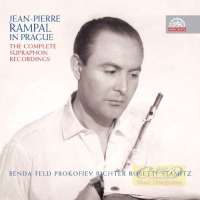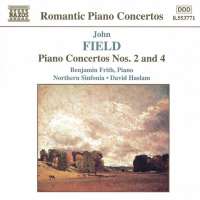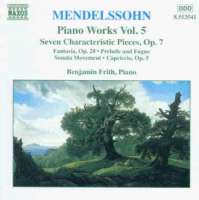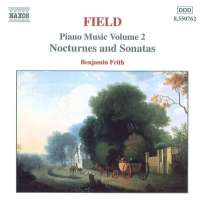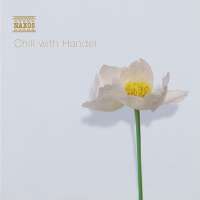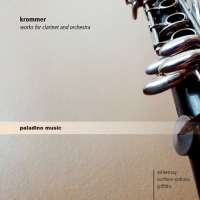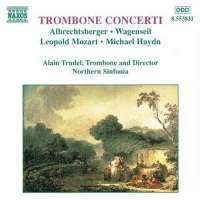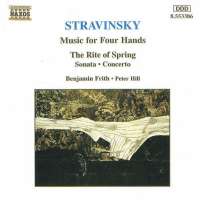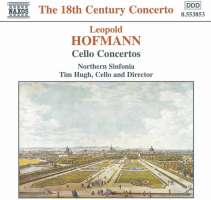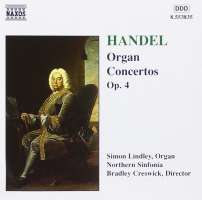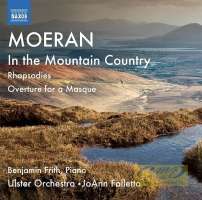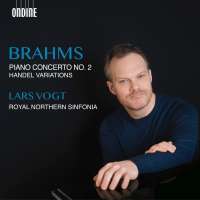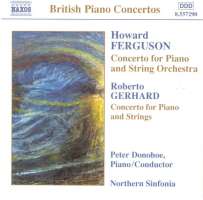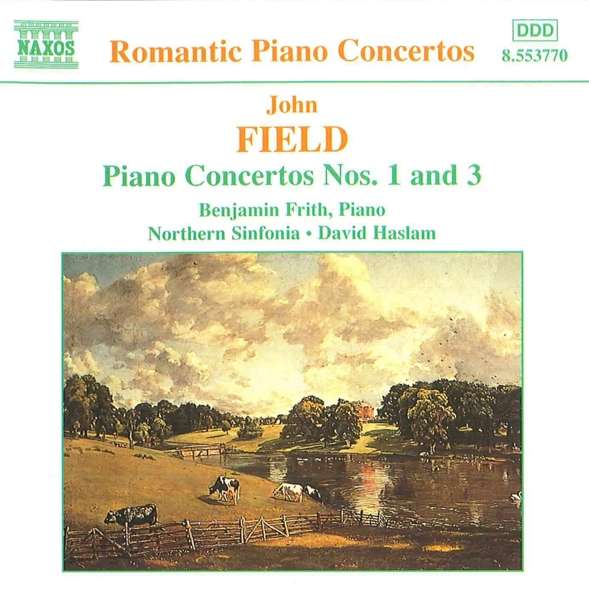
kompozytor
Field, John
tytuł
FIELD: Piano Concertos vol. 1
wykonawcy
Frith, Benjamin;
Northern Sinfonia;
Haslam, David
Northern Sinfonia;
Haslam, David
nr katalogowy
8.553770
opis
Field's Piano Concerto No. 1 in E flat major was first published in St Petersburg in 1814. This first concerto is scored for an orchestra that includes a flute, pairs of oboes, bassoons, French horns, trumpets and drums, and the usual strings. The first movement opens with the expected orchestral exposition, its first subject repeated before a dramatic transition, leading to the first violin second subject, accompanied by plucked strings. The first solo entry brings other material, at first unaccompanied and then accompanied lightly, before rapid passage-work leads to a second subject in lop-sided octaves. It is the soloist who opens the central development with grandiose B flat minor chords, as the movement continues to explore other keys, before an abridged recapitulation. The slow movement, with fashionable exoticism, introduces a Scottish air, in this case James Hook's Within a mile of Edinburgh Town, to which Field adds two variations. Patrick Piggott has pointed out, in his important study of Field, the possible influence of the rival London virtuoso George Griffin, who had introduced The Bluebells of Scotland into a concerto, followed by Steibelt who had used a Scottish air in his Storm Concerto. The air used by Field is simply stated, rhythmic snap and all, followed by a short cadenza before the first variation, with its intricately ornamented melodic line. A further cadenza leads to the second variation in triple rhythms. A third cadenza is followed by a brief coda. •
Field dedicated his Piano Concerto No. 3 in E flat major to Clementi. It was first published in Leipzig in 1816 and is scored for an orchestra that now includes a pair of clarinets, with flutes, oboes, bassoons, French horns, trumpets and timpani, and the very necessary strings. There is the expected orchestral exposition, followed by the solo entry that involves hand-crossing for the provision of an important accompanying rhythmic figure, as well as the very awkward span of a tenth in accompanying left-hand chords. The movement has further elements of technical display in its rapid passage-work, cross-rhythms and general demands for virtuosity, within the expected tripartite form, including an embellished excursion into F sharp major (= G flat major), that suggests Chopin in the asymmetry of melody and accompaniment. Field himself provided a nocturne instead of a slow movement, if occasion demanded, presumably in the expected related key of A flat. Without such an interpolation the concerto proceeds at once to a final rondo in the form of a polonaise, marked Tempo di Polacca. Here again there is a chance for a display of pianistic dexterity in the episodes framed by the principal theme in its varied guises, a move into C major for a gentler passage of piano arpeggios and a return to E flat major for a final section that brings the work to an emphatic conclusion.
nośnik
CD
gatunek
Muzyka klasyczna
producent
Naxos
data wydania
13-10-1997
EAN / kod kreskowy
730099477024

(Produkt nie został jeszcze oceniony)
cena 58,00 zł
lubProdukt dostepny w niewielkiej ilości.
Wysyłka w ciągu 3 dni roboczych
Darmowa wysyłka dla zamówień powyżej 300 zł!
Darmowy kurier dla zamówień powyżej 500 zł!
sprawdź koszty wysyłki